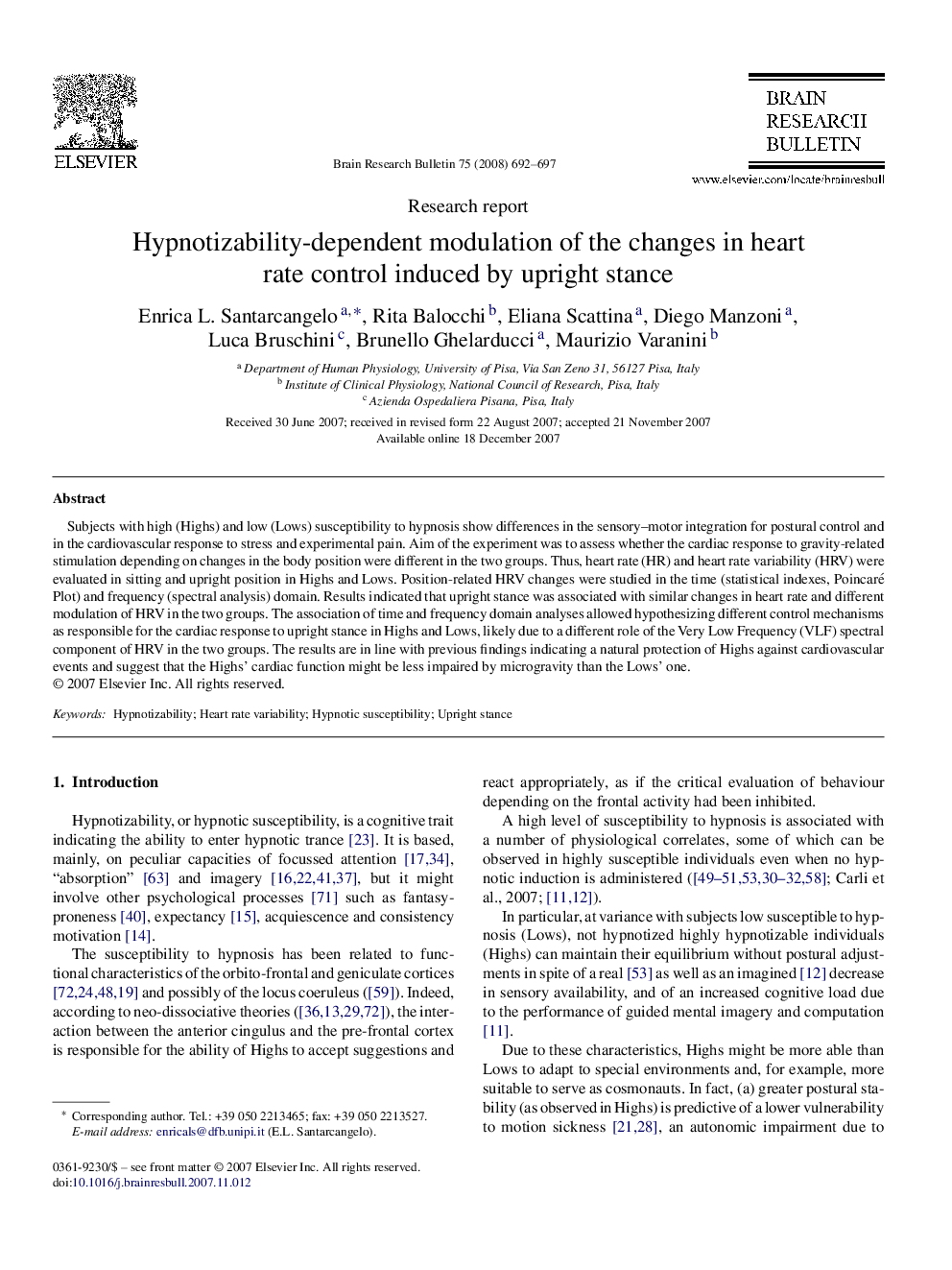| Article ID | Journal | Published Year | Pages | File Type |
|---|---|---|---|---|
| 4320004 | Brain Research Bulletin | 2008 | 6 Pages |
Subjects with high (Highs) and low (Lows) susceptibility to hypnosis show differences in the sensory–motor integration for postural control and in the cardiovascular response to stress and experimental pain. Aim of the experiment was to assess whether the cardiac response to gravity-related stimulation depending on changes in the body position were different in the two groups. Thus, heart rate (HR) and heart rate variability (HRV) were evaluated in sitting and upright position in Highs and Lows. Position-related HRV changes were studied in the time (statistical indexes, Poincaré Plot) and frequency (spectral analysis) domain. Results indicated that upright stance was associated with similar changes in heart rate and different modulation of HRV in the two groups. The association of time and frequency domain analyses allowed hypothesizing different control mechanisms as responsible for the cardiac response to upright stance in Highs and Lows, likely due to a different role of the Very Low Frequency (VLF) spectral component of HRV in the two groups. The results are in line with previous findings indicating a natural protection of Highs against cardiovascular events and suggest that the Highs’ cardiac function might be less impaired by microgravity than the Lows’ one.
